Related Research Articles

French is a Romance language of the Indo-European family. It descended from the Vulgar Latin of the Roman Empire, as did all Romance languages. French evolved from Gallo-Romance, the Latin spoken in Gaul, and more specifically in Northern Gaul. Its closest relatives are the other langues d'oïl—languages historically spoken in northern France and in southern Belgium, which French (Francien) largely supplanted. French was also influenced by native Celtic languages of Northern Roman Gaul like Gallia Belgica and by the (Germanic) Frankish language of the post-Roman Frankish invaders. Today, owing to the French colonial empire, there are numerous French-based creole languages, most notably Haitian Creole. A French-speaking person or nation may be referred to as Francophone in both English and French.

Illinois is a state in the Midwestern United States. The Great Lakes are to its northeast, the Mississippi River to its west, and the Wabash and Ohio rivers to its south. Its largest metropolitan areas are Chicago and the Metro East region of Greater St. Louis. Other metropolitan areas include Peoria and Rockford, as well as Springfield, its capital, and Champaign-Urbana, home to the main campus of the state's flagship university. Of the fifty U.S. states, Illinois has the fifth-largest gross domestic product (GDP), the sixth-largest population, and the 25th-largest land area.

The United States does not have an official language at the federal level, but the most commonly used language is English, which is the de facto national language. It is also the language spoken at home by the great majority of the U.S. population. Many other languages are also spoken at home, especially Spanish, according to the American Community Survey (ACS) of the U.S. Census Bureau; these include indigenous languages originally spoken by Native Americans, Alaska Natives, Native Hawaiians, and native populations in the U.S. unincorporated territories. Other languages were brought in by people from Europe, Africa, Asia, other parts of the Americas, and Oceania, including multiple dialects, creole languages, pidgin languages, and sign languages originating in what is now the United States. Interlingua, an international auxiliary language, was also created in the U.S.
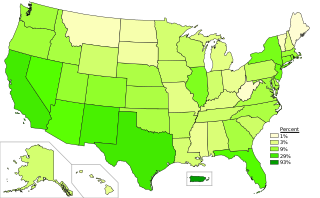
Spanish is the second most spoken language in the United States. Over 42 million people aged five or older speak Spanish at home. Spanish is also the most learned language other than English, with about 8 million students. Estimates count up to 57 million native speakers, heritage language speakers, and second-language speakers. There is an Academy of the Spanish Language located in the United States as well.

The English-only movement, also known as the Official English movement, is a political movement that advocates for the use of only the English language in official United States government operations through the establishment of English as the only official language in the United States. The United States has never had a legal policy proclaiming an official national language. However, at some times and places, there have been various moves to promote or require the use of English, such as in Native American boarding schools.
The French language is spoken as a minority language in the United States. Roughly 2.1 million Americans over the age of five reported speaking the language at home in a federal 2010 estimate, making French the fourth most-spoken language in the nation behind English, Spanish, and Chinese.

Over 50 million Americans claim German ancestry, which makes them the largest single claimed ancestry group in the United States. Around 1.06 million people in the United States speak the German language at home. It is the second most spoken language in North Dakota and is the third most spoken language in 16 other states.
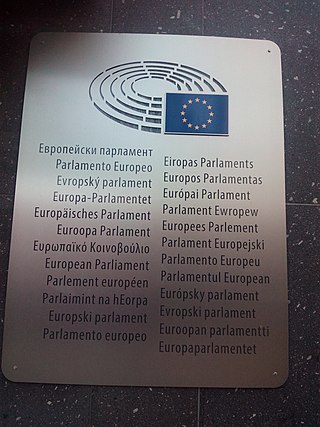
The European Union (EU) has 24 official languages, of which three – English, French and German – have the higher status of "procedural" languages of the European Commission. Irish previously had the lower status of "treaty language" before being upgraded to an official and working language in 2007. However, a temporary derogation was enforced until 1 January 2022. The three procedural languages are those used in the day-to-day workings of the institutions of the EU. The designation of Irish as a "treaty language" meant that only the treaties of the European Union were translated into Irish, whereas Legal Acts of the European Union adopted under the treaties did not have to be. Luxembourgish and Turkish, which have official status in Luxembourg and Cyprus, respectively, are the only two official languages of EU member states that are not official languages of the EU. In 2023, the Spanish government requested that its co-official languages Catalan, Basque, and Galician be added to the official languages of the EU.

The East North Central states is a region of the United States defined by the U.S. Census Bureau, containing five states: Illinois, Indiana, Michigan, Ohio and Wisconsin. These states border the Great Lakes, West North Central, the Southeastern, and Northeastern states; the Eastern North Central states also share a land border with Canada through Michigan's Upper Peninsula, southeastern, and mid-Michigan regions. As one of two subregional divisions used to categorize the Midwest, East North Central closely matches the area of the Northwest Territory, excluding a portion of Minnesota.
This article details the geographical distribution of speakers of the German language, regardless of the legislative status within the countries where it is spoken. In addition to the German-speaking area in Europe, German-speaking minorities are present in many countries and on all six inhabited continents.

The English language in Europe, as a native language, is mainly spoken in the United Kingdom and Ireland. Outside of these states, it has official status in Malta, the Crown Dependencies, Gibraltar and the Sovereign Base Areas of Akrotiri and Dhekelia. In the Netherlands, English has an official status as a regional language on the isles of Saba and Sint Eustatius. In other parts of Europe, English is spoken mainly by those who have learnt it as a second language, but also, to a lesser extent, natively by some expatriates from some countries in the English-speaking world.
A national language is a language that has some connection—de facto or de jure—with a nation. There is little consistency in the use of this term. One or more languages spoken as first languages in the territory of a country may be referred to informally or designated in legislation as national languages of the country. National languages are mentioned in over 150 world constitutions.
North American English regional phonology is the study of variations in the pronunciation of spoken North American English —what are commonly known simply as "regional accents". Though studies of regional dialects can be based on multiple characteristics, often including characteristics that are phonemic, phonetic, lexical (vocabulary-based), and syntactic (grammar-based), this article focuses only on the former two items. North American English includes American English, which has several highly developed and distinct regional varieties, along with the closely related Canadian English, which is more homogeneous geographically. American English and Canadian English have more in common with each other than with varieties of English outside North America.
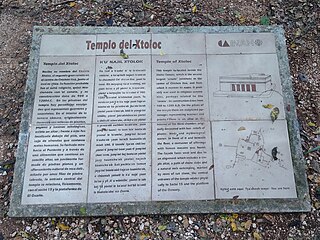
The Constitution of Mexico does not declare an official language; however, Spanish is the de facto national language spoken by over 99% of the population making it the largest Spanish speaking country in the world. The government also recognizes 63 indigenous languages spoken in their communities out of respect, including Nahuatl, Mayan, Mixtec, etc.
Of the languages spoken in Texas none has been designated the official language. As of 2020, 64.9 % of residents spoke only English at home, while 28.8% spoke Spanish at home. Throughout the history of Texas, English and Spanish have at one time or another have been the primary dominant language used by government officials, with German recognized as a minority language from statehood until the first world war. Prior to European colonization, several indigenous languages were spoken in what is now Texas, including Caddoan, Na-Dené and Uto-Aztecan languages.
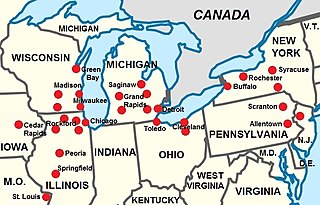
Inland Northern (American) English, also known in American linguistics as the Inland North or Great Lakes dialect, is an American English dialect spoken primarily by White Americans in a geographic band reaching from the major urban areas of Upstate New York westward along the Erie Canal and through much of the U.S. Great Lakes region. The most distinctive Inland Northern accents are spoken in Chicago, Milwaukee, Detroit, Cleveland, Buffalo, Rochester, and Syracuse. The dialect can be heard as far west as eastern Iowa and even among certain demographics in the Twin Cities, Minnesota. Some of its features have also infiltrated a geographic corridor from Chicago southwest along historic Route 66 into St. Louis, Missouri; today, the corridor shows a mixture of both Inland North and Midland American accents. Linguists often characterize the western Great Lakes region's dialect separately as North-Central American English.
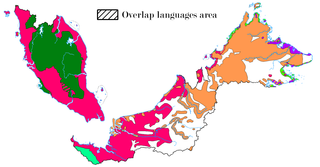
The indigenous languages of Malaysia belong to the Mon-Khmer and Malayo-Polynesian families. The national, or official, language is Malay which is the mother tongue of the majority Malay ethnic group. The main ethnic groups within Malaysia are the Malay people, Han Chinese people and Tamil people, with many other ethnic groups represented in smaller numbers, each with its own languages. The largest native languages spoken in East Malaysia are the Iban, Dusunic, and Kadazan languages. English is widely understood and spoken within the urban areas of the country; the English language is a compulsory subject in primary and secondary education. It is also the main medium of instruction within most private colleges and private universities. English may take precedence over Malay in certain official contexts as provided for by the National Language Act, especially in the states of Sabah and Sarawak, where it may be the official working language. Furthermore, the law of Malaysia is commonly taught and read in English, as the unwritten laws of Malaysia continues to be partially derived from pre-1957 English common law, which is a legacy of past British colonisation of the constituents forming Malaysia. In addition, authoritative versions of constitutional law and statutory law are continuously available in both Malay and English.

Midland American English is a regional dialect or super-dialect of American English, geographically lying between the traditionally-defined Northern and Southern United States. The boundaries of Midland American English are not entirely clear, being revised and reduced by linguists due to definitional changes and several Midland sub-regions undergoing rapid and diverging pronunciation shifts since the early-middle 20th century onwards.

Missouri French or Illinois Country French also known as français vincennois, français Cahok, and nicknamed "Paw-Paw French" often by individuals outside the community but not exclusively, is a variety of the French language spoken in the upper Mississippi River Valley in the Midwestern United States, particularly in eastern Missouri.
References
- ↑ Crews, Haibert O. (January 23, 1923). "Talk American, Not English". Champaign-Urbana Courier . p. 10. Retrieved March 23, 2021– via Newspapers.com.
- ↑ Baron, Dennis (n.d.). "Language Laws and Related Court Decisions". Dennis Baron: Professor of English and linguistics. University of Illinois at Urbana-Champaign Department of English. Retrieved 30 March 2014.
- ↑ Davis, Robert (September 24, 1969). "News Briefs: Its Legal—We Speak English". Chicago Tribune . sec. 1, p. 3. Retrieved March 23, 2021– via Newspapers.com.
- ↑ For example, 225 ILCS705/27.01
- ↑ Baron, Dennis (2001). "Language Legislation and Language Abuse: American Language Policy through the 1990s". In Dueñas González, Roseann; Melis, Ildikó (eds.). Language Ideologies: Critical Perspectives on the Official English Movement. Vol. 2: History, Theory, and Policy. Mahwah, New Jersey: Lawrence Erlbaum Associates. ISBN 0-8058-4054-0 . Retrieved 30 March 2014.
- ↑ Friedman, Lauren (2012). "A Northern Cities Shift Retreat in the St. Louis Corridor" (PDF). 36th Annual Penn Linguistics Colloquium. University of Pennsylvania . Retrieved 16 February 2015.
- ↑ Frazer, Timothy C. (2007). "Tongue ties: The linguistic map of western Illinois". Illinois Heritage. Springfield: Illinois State Historical Society. 10 (3): 12–15. Retrieved 30 March 2014.
- 1 2 3 "Illinois". Modern Language Association. Archived from the original on August 15, 2013. Retrieved August 11, 2013.
- ↑ Ryan, Camille (August 2013). "Language Use in the United States: American Community Survey Reports" (PDF). Census.gov. United States Census Bureau. Archived from the original (PDF) on 5 February 2016. Retrieved 30 March 2014.
- ↑ "The Illinois Identity: Language". MuseumLink Illinois. Illinois State Museum. 2000. Retrieved 30 March 2014.
- ↑ Boggess, Arthur Clinton (1908). The Settlement of Illinois 1778-1830 (PDF). Chicago: Chicago Historical Society. p. 50. Archived from the original (PDF) on 2017-05-16. Retrieved 30 March 2014.
- ↑ Boggess, 135
- ↑ O'Connor, Rorye (15 November 2012). "French still thrives in the Illinois territory". Mt. Vernon Register-News . Mt. Vernon, Illinois. Archived from the original on 7 April 2014. Retrieved 30 March 2014.